Abstract
During the transition of tobacco (Nicotiana tabacum) pith tissue to callus tissue, there were changes in the composition of the soluble amino acid pools, in the distribution of amino acids between pool and protein, and in the synthesis, accumulation, and degradation of proteins. The size of the leucine pool decreased from 90 nanomoles per gram fresh weight in fresh pith to 20 nanomoles in 24-hour cultured pith, followed by a return to 90 nmoles in pith cultured longer than 5 days. The latter value is the same as that reported for exponentially growing callus cells. Many other pool amino acids changed as dramatically. However, they always approached callus levels after 5 days of culturing. The total amino acid content of pith tissue (the sum of both pool and protein) remained unchanged during culturing. The value for total amino acid content (34 to 42 nanomoles per gram fresh weight) was also similar to that found in callus. The distribution of amino acids between pool and protein did change during culturing. The transition of pith tissue with 88% of its total amino acids free in the soluble pool to callus with 92% of its amino acids in protein was further characterized by changes in protein metabolism. Both protein synthesis and accumulation increased over the first 50 hours in culture to a maximum rate of 45 milligrams protein synthesized gram protein−1 hour−1. After 50 hours in culture, the rate of protein accumulation decreased to equal the rate of fresh weight accumulation (10 mg g−1 hour−1). However, protein synthesis continued at a high rate for several days, suggesting protein degradation was turned on by this time. By 5 days protein synthesis had decreased to a rate similar to that of callus.
Full text
PDF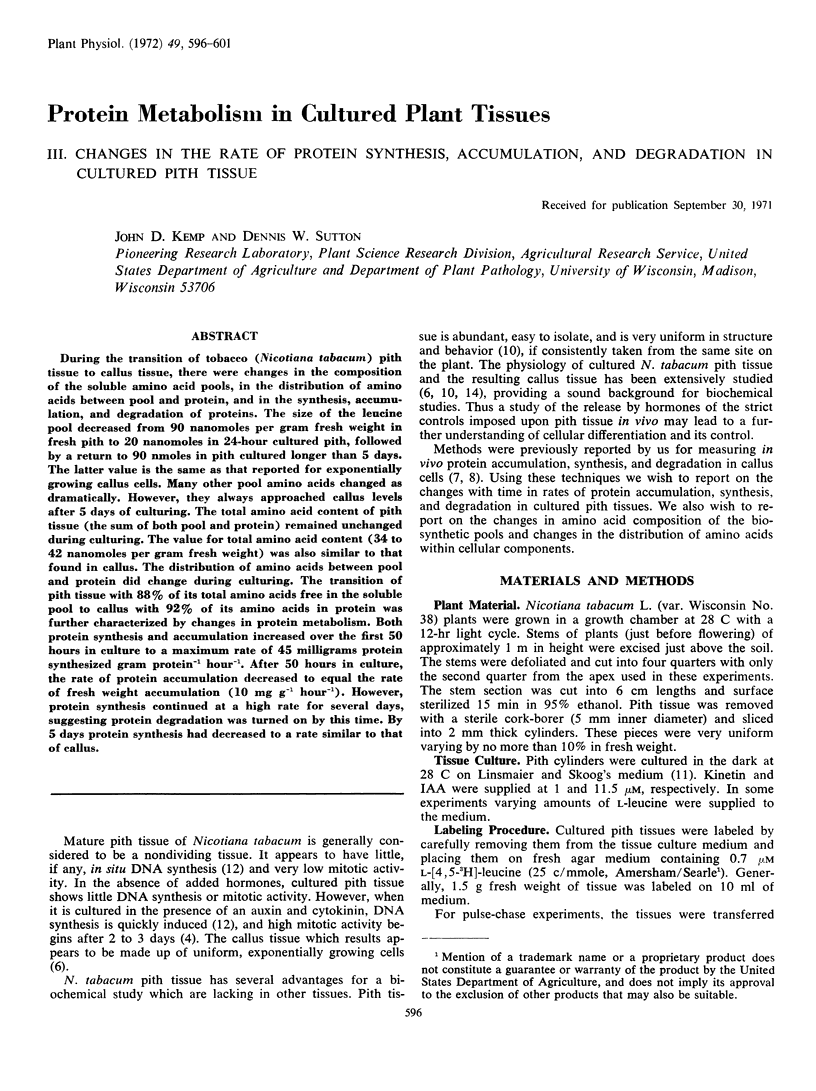
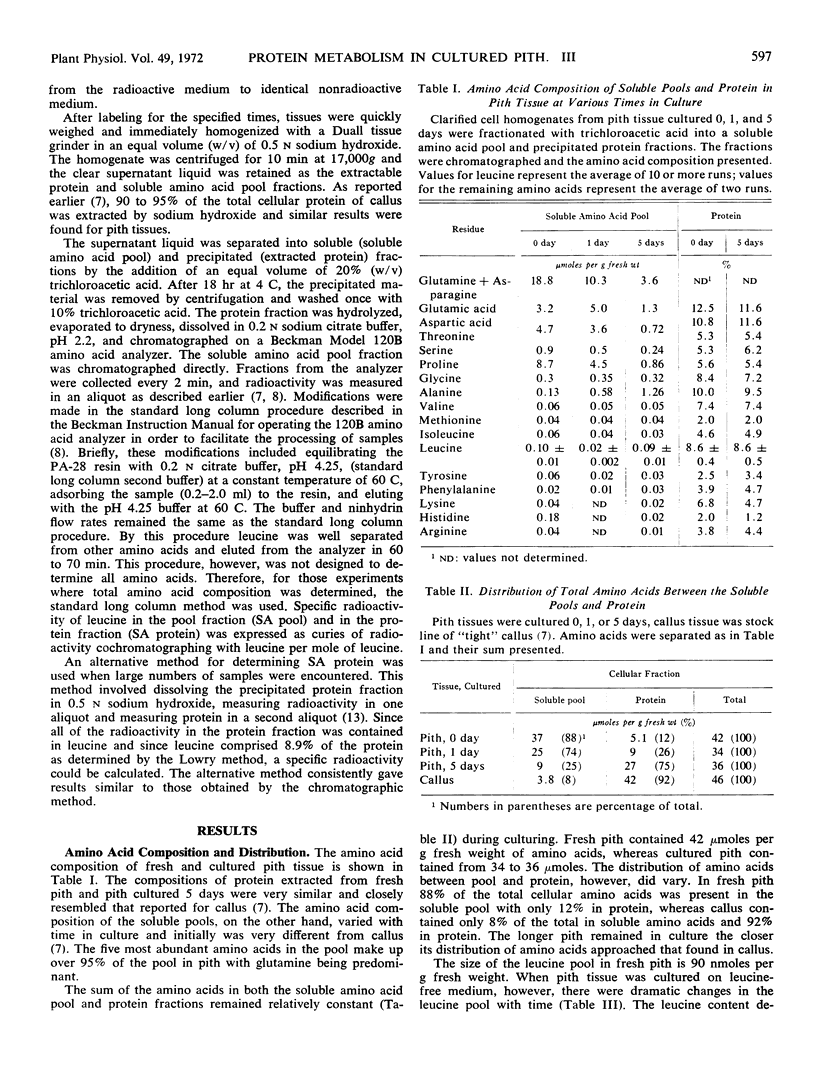
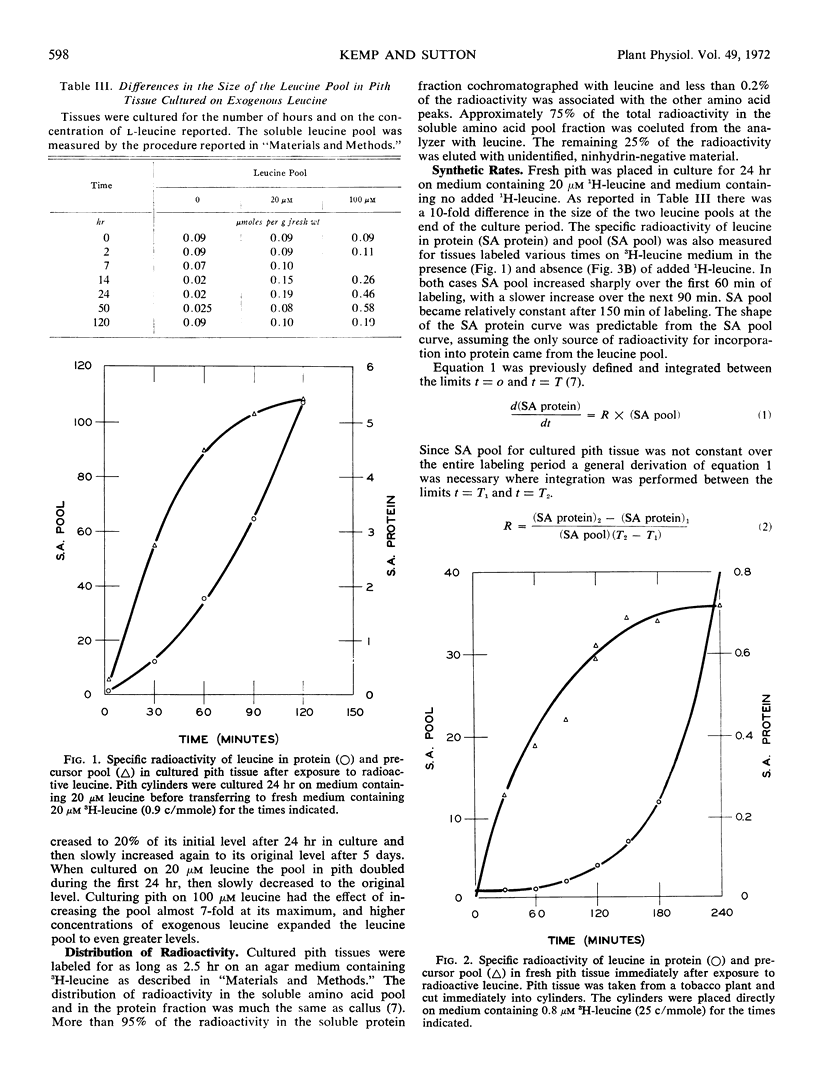
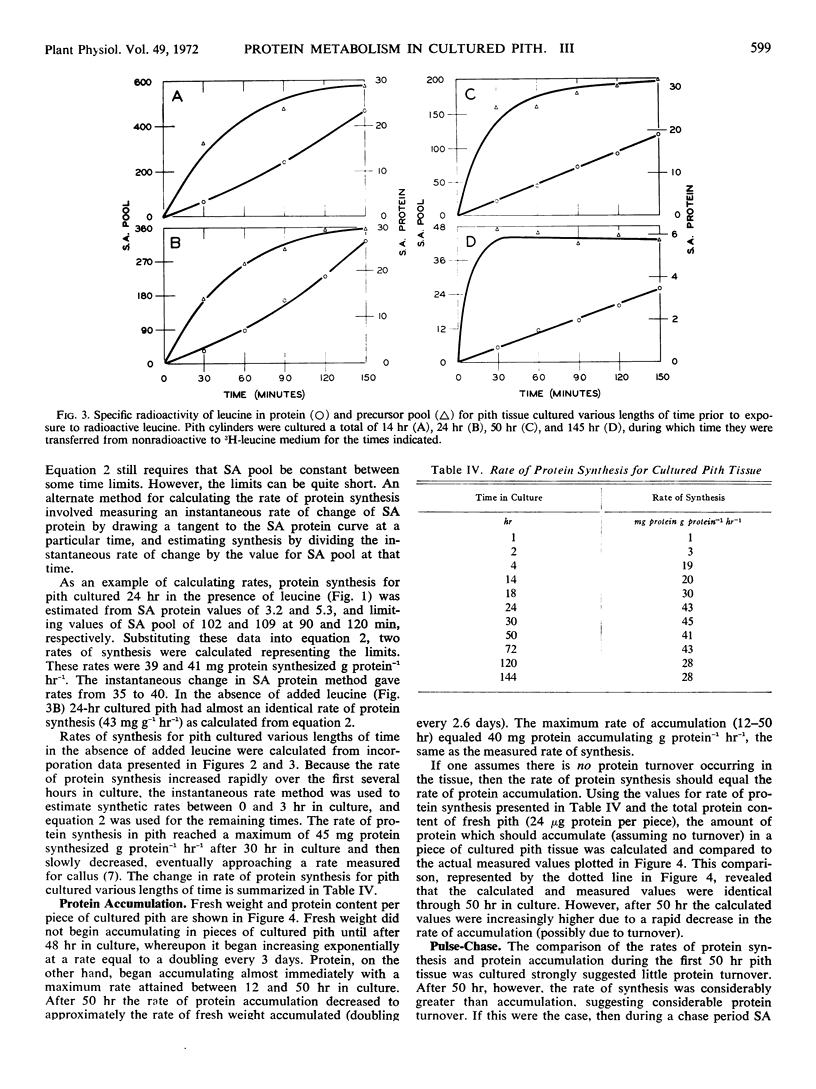
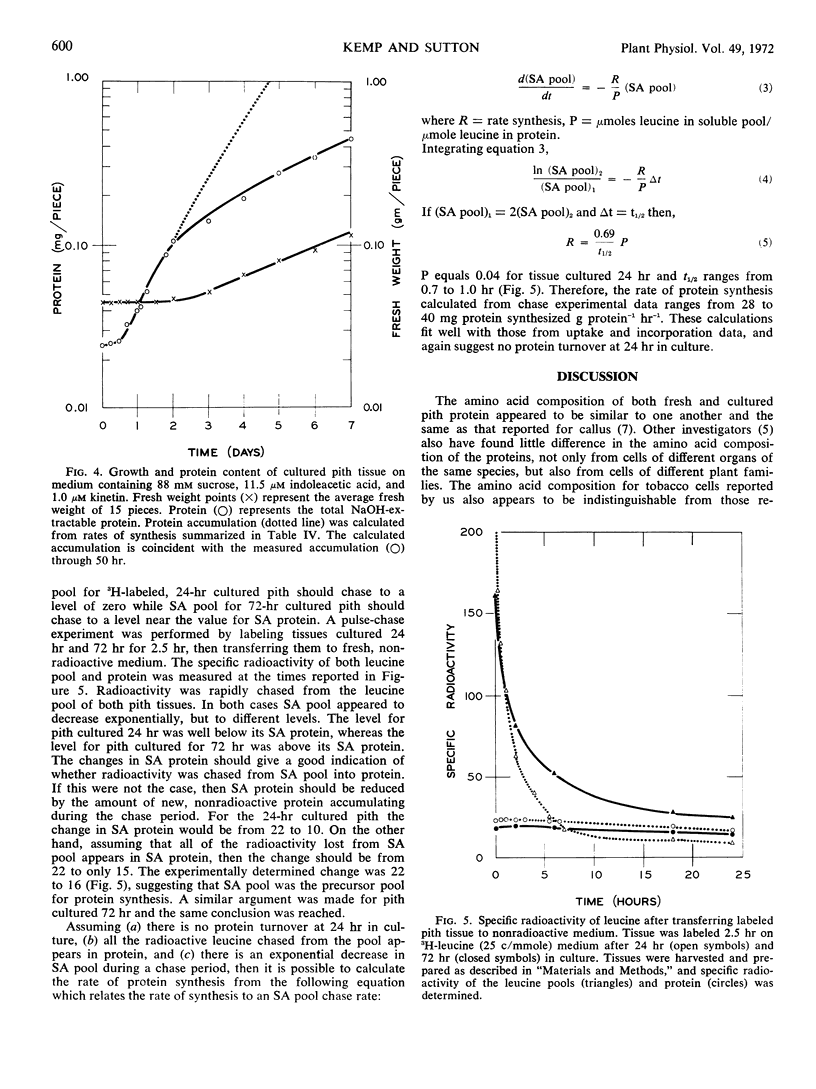
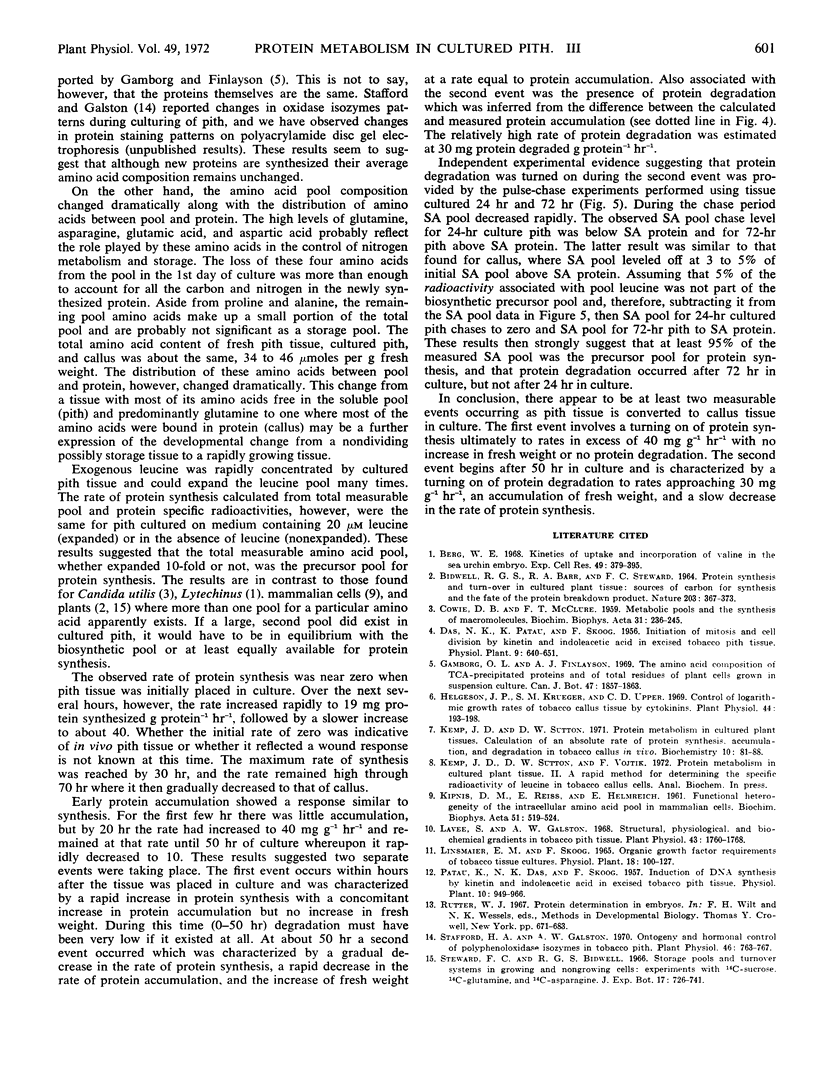
Selected References
These references are in PubMed. This may not be the complete list of references from this article.
- Berg W. E. Kinetics of uptake and incorporation of valine in the sea urchin embryo. Exp Cell Res. 1968 Feb;49(2):379–395. doi: 10.1016/0014-4827(68)90188-2. [DOI] [PubMed] [Google Scholar]
- COWIE D. B., McCLURE F. T. Metabolic pools and the synthesis of macromolecules. Biochim Biophys Acta. 1959 Jan;31(1):236–245. doi: 10.1016/0006-3002(59)90460-3. [DOI] [PubMed] [Google Scholar]
- Helgeson J. P., Krueger S. M., Upper C. D. Control of logarithmic growth rates of tobacco callus tissue by cytokinins. Plant Physiol. 1969 Feb;44(2):193–198. doi: 10.1104/pp.44.2.193. [DOI] [PMC free article] [PubMed] [Google Scholar]
- KIPNIS D. M., REISS E., HELMREICH E. Functional heterogeneity of the intracellular amino acid pool in mammalian cells. Biochim Biophys Acta. 1961 Aug 19;51:519–524. doi: 10.1016/0006-3002(61)90608-4. [DOI] [PubMed] [Google Scholar]
- Kemp J. D., Sutton D. W. Protein metabolism in cultured plant tissues. Calculation of an absolute rate of protein synthesis, accumulation, and degradation in tobacco callus in vivo. Biochemistry. 1971 Jan 5;10(1):81–88. doi: 10.1021/bi00777a013. [DOI] [PubMed] [Google Scholar]
- Lavee S., Galston A. W. Structural physiological, and biochemical gradients in tobacco pith tissue. Plant Physiol. 1968 Nov;43(11):1760–1768. doi: 10.1104/pp.43.11.1760. [DOI] [PMC free article] [PubMed] [Google Scholar]
- Stafford H. A., Galston A. W. Ontogeny and hormonal control of polyphenoloxidase isozymes in tobacco pith. Plant Physiol. 1970 Dec;46(6):763–767. doi: 10.1104/pp.46.6.763. [DOI] [PMC free article] [PubMed] [Google Scholar]


